Scientists have studied the feasibility of plants growing on the moon through experiments. It shows that Arabidopsis plants grow slower in lunar soil samples and show more signs of stress than in earth volcanic ash These lunar soils are samples collected during the Apollo mission. The authors point out that these findings suggest that in order for plants to grow effectively in lunar soil, the interaction between plants and lunar soil needs to be further studied.
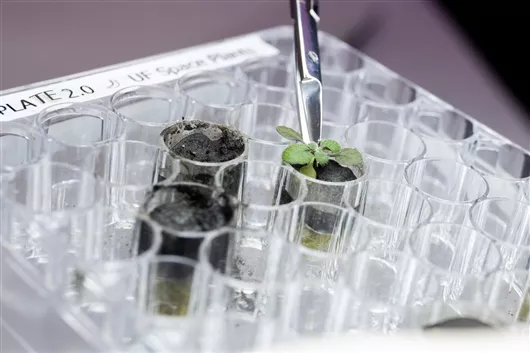
Researchers are collecting pictures of Arabidopsis in lunar soil from Tyler Jones
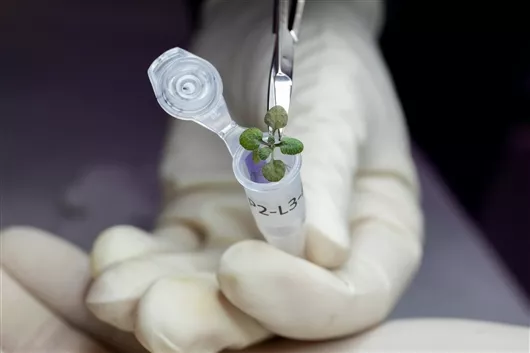
Put the plants in the experiment into the tube for gene analysis. The picture is from Tyler Jones
The relevant research results were published in communication biology on May 12.
Robert ferl of the University of Florida and colleagues tested whether lunar soil can support plant life. They allowed Arabidopsis, a flowering plant produced in Europe and Africa, to grow in 12 soil samples collected by Apollo 11, 12 and 17 lunar missions.
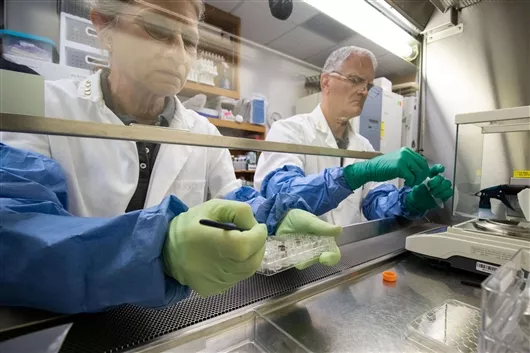
Anna Lisa Paul (left) and rob ferl (right) are working on lunar soil in the laboratory. The picture is from Tyler Jones
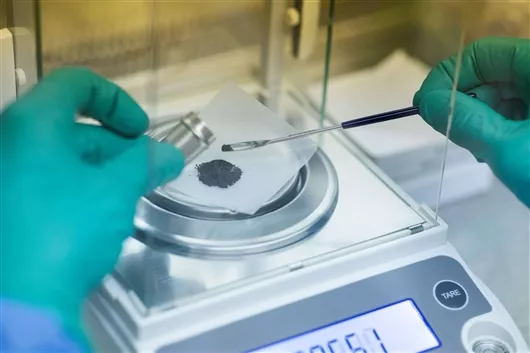
Rob ferl is weighing lunar soil, which has been sealed in test tubes since Apollo 11, 12 and 17 missions. Picture from Tyler Jones
Because the samples collected during each mission came from different soil layers, Apollo 11 samples were exposed to the lunar surface longer than Apollo 12 and 17 samples. The researchers examined whether there were differences in growth and gene expression between these plants and compared with Arabidopsis grown in 16 samples of earth volcanic ash (the particle size and mineral composition of volcanic ash are similar to lunar soil).
The researchers found that although seeds can grow in all soil environments, plants in lunar soil grow more slowly than in volcanic ash, take longer to spread their leaves and have more stagnant roots. Although some lunar soil plants are similar in shape and color to those grown in volcanic ash, others are stunted and contain reddish melanin - a typical sign of plant stress. Genetic analysis of three smaller, darker plants showed that they had more than 1000 genes (mostly related to stress) with different expression levels from those in volcanic ash.
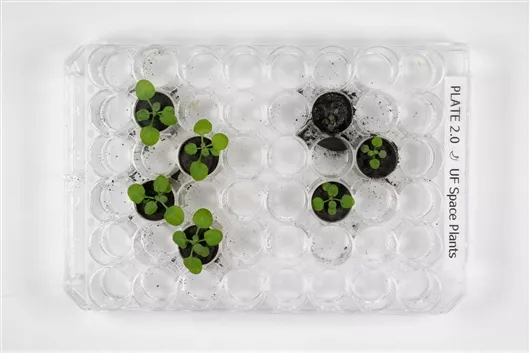
By day 16, the plants in the volcanic ash (left) and the plants in the lunar soil (right) had obvious physiological differences. The picture is from Tyler Jones
In addition, the researchers found that the plants grown in Apollo 11 samples grew weaker than those in Apollo 12 and 17 samples, and expressed more different levels of genes than those in volcanic ash. The plants in Apollo 11, 12 and 17 samples expressed 465, 265 and 113 genes at different levels, respectively. 71% of these genes are related to stress caused by salt, metal and reactive oxygen molecules.
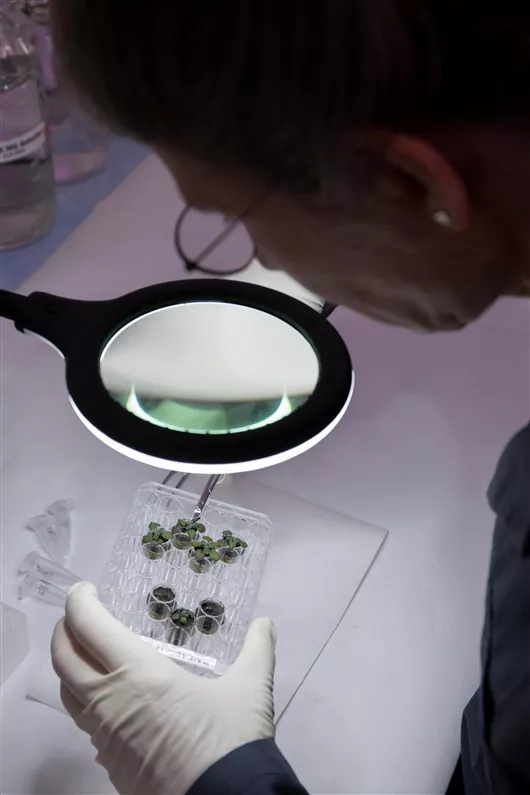
Anna Lisa Paul is doing fine plant collection work for subsequent genetic analysis. Picture from Tyler Jones
These findings suggest that although lunar soils can be used for planting, they do not support plant growth as much as volcanic ash - especially those more exposed to the moon's surface. The researchers speculate that cosmic rays and solar wind destroy lunar soils, and these lunar soils contain tiny iron particles, or induce stress responses of plants and damage their development.